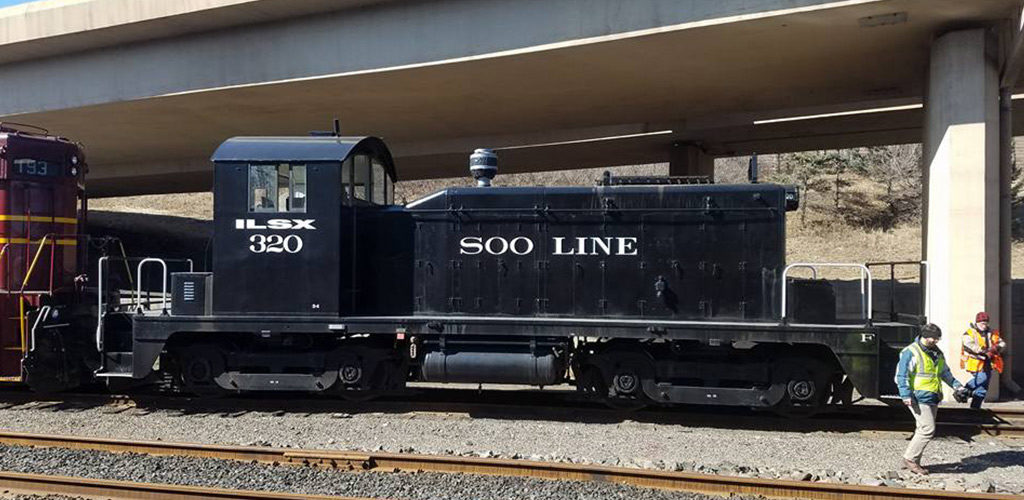Diesel Locomotives
The Lake Superior Railroad Museum’s diesel locomotive collection is diverse, showing examples from the 1930’s through the 1960’s, including some very rare examples such as the Great Northern #192, one of only ten such NW5 type locomotives built for GN in 1946-1947. One of the legendary SOO Line 1949 EMD FP-7s that once pulled Soo Line passenger trains out of Duluth. Also there is the first diesel believed to have been used on the Mesabi Range the Oliver Iron Mining # 900, and the last diesel built by Baldwin-Lima-Hamilton the Erie Mining Company #7243.
Diesel locomotives are internal combustion machines that have a prime mover called a diesel, named for its inventor, Dr. Rudolf Diesel. The first regular use of diesels in the United States was in switching service, but in the 1930s the Burlington Route and Union Pacific developed streamlined trains pulled by new diesels, which began the widespread use of internal combustion locomotives in passenger service. In 1939, the ElectroMotive Division of General Motors built a streamlined freight diesel called the FT, which traveled several U.S. railroads to demonstrate the efficiency of diesel locomotives. The tour was a huge success, and following World War II railroads moved to “dieselize” their systems. Diesels offer significant cost and operating advantages over steam locomotives: they can be started and stopped almost instantly, while steam locomotives require intensive maintenance, lubrication and cleaning before, during and after use. Several diesels can be hooked together and operated from a single cab, unlike steam engines. The cost saving was so great that by 1960, most steam locomotives in the United States had been replaced by diesels
Many of the diesel locomotives in the collection can be seen pulling trains on the North Shore Scenic Railroad in the summer/fall months.



















